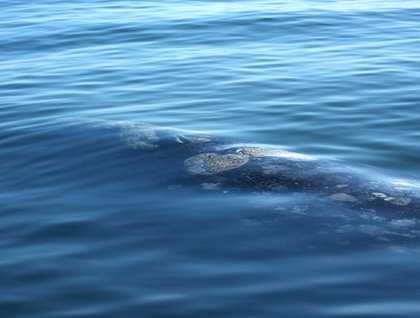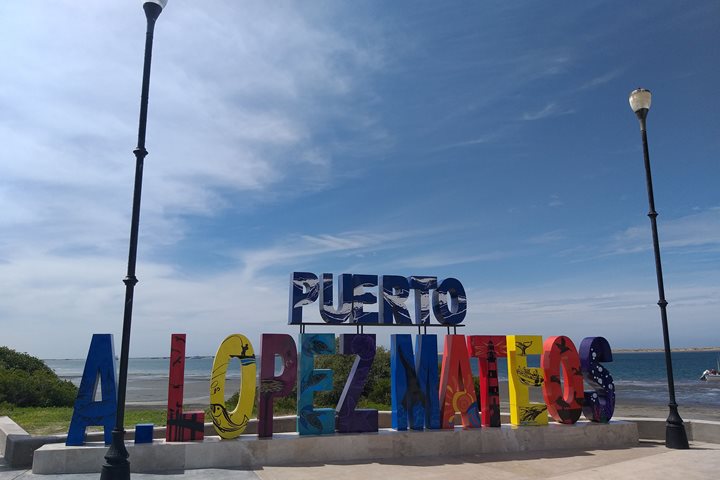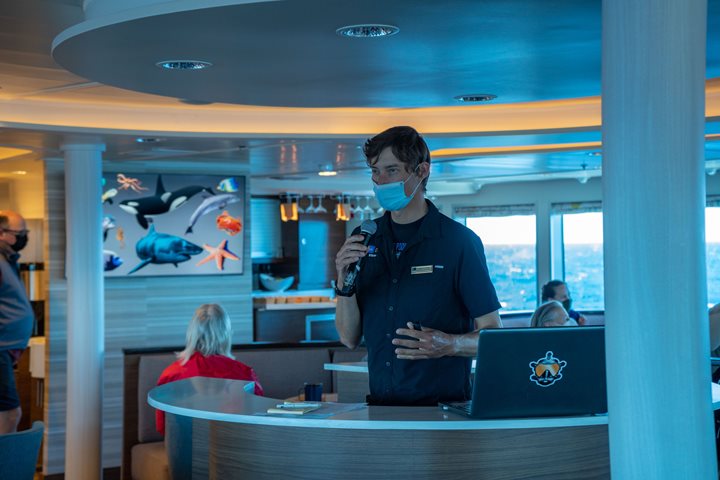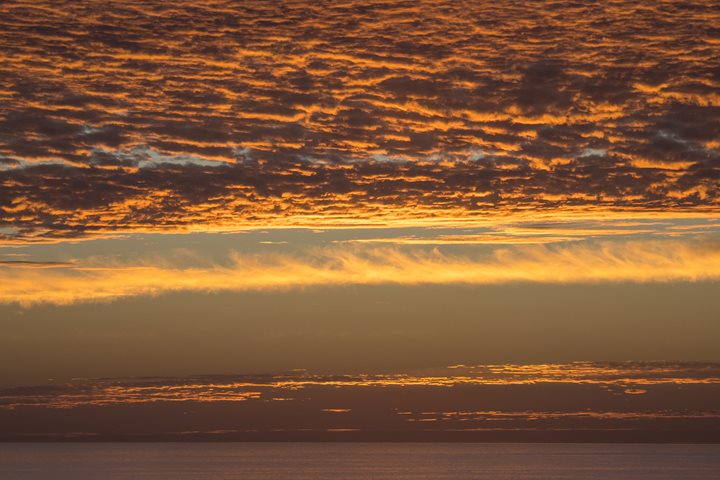A dense fog curtain dropped upon the Magdalena Island and waters of Boca de la Soledad this morning. Right after breakfast, on the National Geographic Sea Bird, guests, naturalists with GPS devices, and crew were ready to board boats to commence our first round of gray whale watching, and very soon the fog burned up and a clear atmosphere and sunny blue sky revealed. The engines of the boats roared on the way north to Santo Domingo Island, with enthusiastic crowds on them. The gray whales were quickly found close to the Boca, on a very calm sea that allowed us to see them coming up just below the surface of the water. This observation occurred multiple times. Also, some particular whale pairs showed a “friendly” behavior as they came right next to our boats. For many minutes the mothers put their giant snouts out of the water, and pulled our boats up, followed by their babies full of curiosity. Nearly all guests and naturalist touched, in this way, the gentle giants. At moments there were many whales in the Boca, literally surrounding out rubber boats. Some of these animals breached or spy hoped several times. We spent four alternated rounds of whale watching throughout the day, with the same results. Whales that were seen yesterday appeared today, but they, surprisingly, did not approach to our happy parties. This demonstrated that the “friendly” behavior does not always occur, even with individuals that are known to be friendly very often. There are moments that the cows just didn’t feel in the mood to approach us. Fortunately, other whales did!
The dunes of Magdalena Island were explored in the afternoon, and that exploration gave us various surprises. The light was yellowish and tinted the dunes with intense ochre. The green of the plants was strong and oversaturated. Several cormorants were seen perched on the mangroves with frigatebirds, yellow-crowned night herons, great blue herons, snowy and great egrets, and tricolored herons. Over the dunes there were ravens and a magnificent northern Harris hunting. Rarely seen, a caracara, predator bird related to storks, patrolled the sands too. Probably the highlight was a black-tailed jackrabbit that laid flat on the ground trying to be invisible to our trained eyes. But we observed and photographed it! There were questions like this among our guests: how many times have we passed them by and didn’t see them? That’s the key to survive on the dunes of Magdalena: watch, but avoid being watched.







